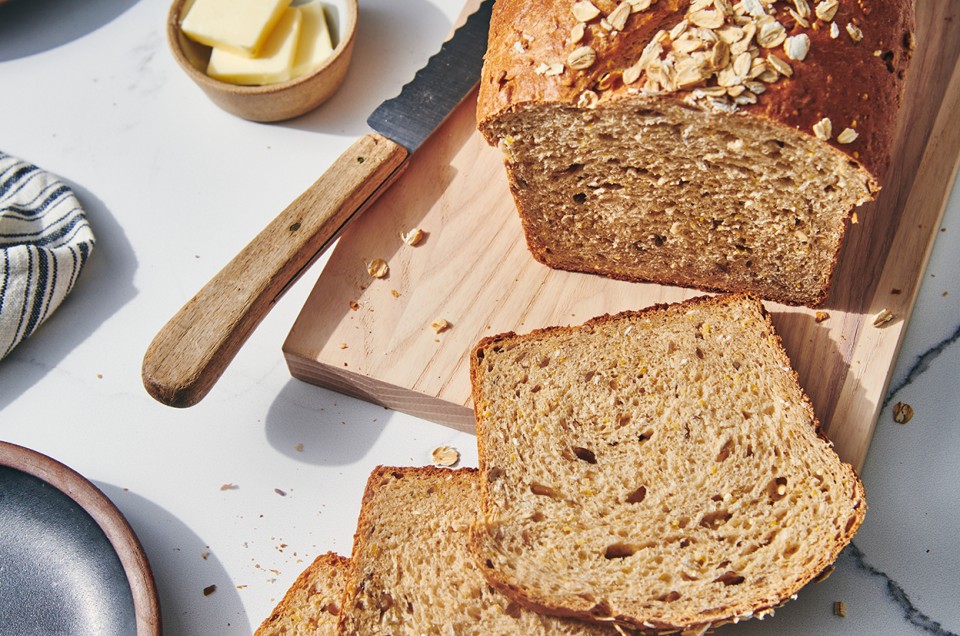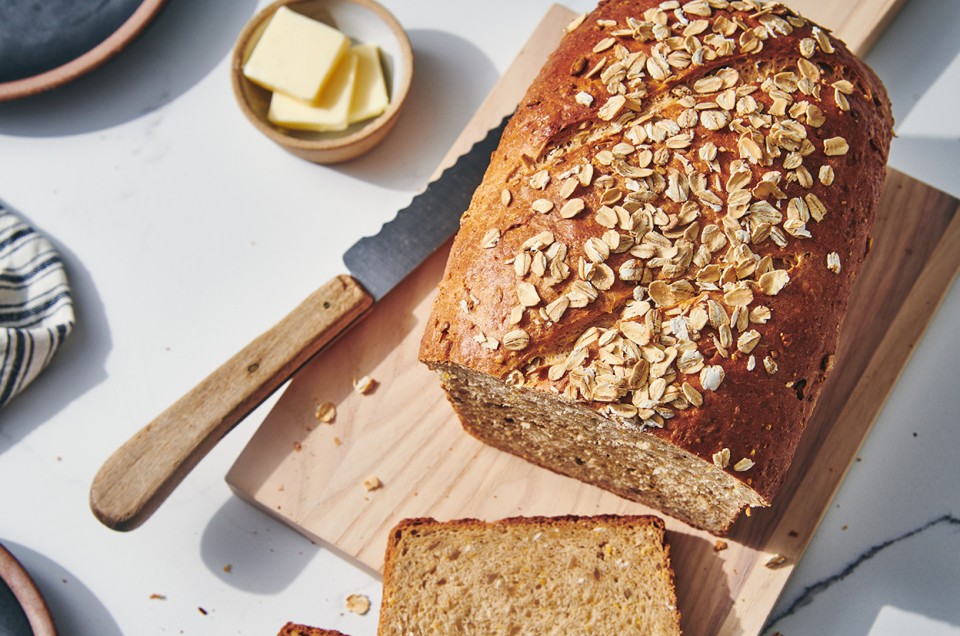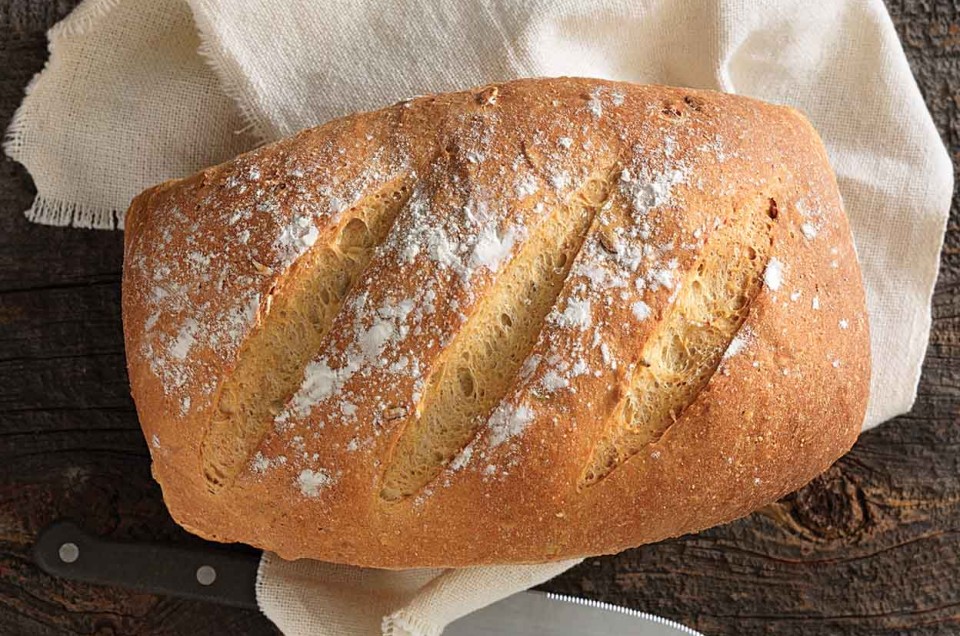Multigrain Loaf
Whole grains? No problem. King Arthur Whole-Grain Bread Improver helps give you a beautifully risen loaf, great for sandwiches and yummy toasted, with butter and jam.




Whole grains? No problem. King Arthur Whole-Grain Bread Improver helps give you a beautifully risen loaf, great for sandwiches and yummy toasted, with butter and jam.






Weigh your flour; or measure it by gently spooning it into a cup, then sweeping off any excess. Mix and knead all of the ingredients — by hand, mixer, or bread machine — to make a smooth, supple dough. Start with the smaller amount of water, adding additional if necessary.
Place the dough in a lightly greased bowl, cover it, and let it rise for 1 hour, until it's noticeably puffy.
Gently deflate the dough, and shape it into an 8" log. Place it in a lightly greased 8 1/2" x 4 1/2" bread pan. Drape the pan lightly with greased plastic wrap, and let the loaf rise for about 1 1/2 hours, until it's crowned about 1" over the rim of the pan. Towards the end of the rising time, preheat the oven to 350°F.
Bake the bread for 35 to 40 minutes, or until it's golden brown, and a digital thermometer inserted into the center register at least 190°F. Remove it from the oven, and turn it out onto a rack to cool.
How long do you need to knead? There's a way to determine when yeast dough is kneaded to perfection; see our video, How to tell if bread dough is fully kneaded.
When letting yeast dough rise, ignore the clock and use your eyes to assess whether it's fully risen, e.g., "Allow the dough to rise until it's doubled in bulk," or "Let the loaf rise until it's crowned 1" over the rim of the pan." Specific rising times noted in a recipe are only a general guide; go by what you see, not by your kitchen timer.
To freeze baked bread, wrap tightly in plastic wrap (a whole loaf, individual pieces, or several slices at a time), then in a second layer of plastic or in a resealable bag. Store bread in the back or bottom of the freezer, where it won't be constantly exposed to room-temperature air when the freezer door is opened. For best results, use frozen bread within 1 month.

Popular in recipes
Popular in products

